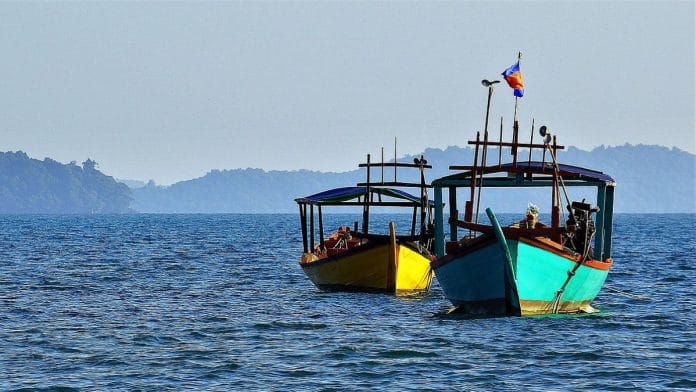When it comes to the Ocean, the 20th century’s “extract and earn” philosophy is finished. Widespread plastic pollution, depleting resources, acidifying waters and expansive dead zones mean we must forge a new path. The only way forward is circular and sustainable.
But going sustainable does not have to mean foregoing profits or return on investment (ROI). The sustainable blue economy has enormous untapped economic potential.
Already, the world has started taking notice. For example, the United Nations’ Sustainable Blue Economy Investment Forum (SBEIF), hosted by the governments of Portugal and Kenya, saw governments, development banks, and philanthropic and corporate actors convene and commit to investing billions of dollars in everything from blue biotech and sustainable shipping to Marine Protected Areas. They are seizing the opportunity the blue economy presents.
Also read: How climate change affects economic growth
The opportunity of the blue economy
At the SBEIF, delegates highlighted industries like blue biotech, decarbonization of shipping, sustainable aquaculture, offshore renewables, natural tide control — mangroves management — blue carbon sequestration, shrimp production genetics and more for their remarkable economic potential.
To take full advantage of these opportunities, however, more work is required. The President of Kenya, Uhuru Kenyatta, highlighted four key areas of improvement that would allow the world to sustainably reap the rewards:
-
Identify solutions to handle upfront costs of shipping and sustainable port development technology, without compromising quality.
-
Tighten rules, policies and procedures governing the handling of resources, specifically outside national waters — such as excessive fisheries with excessive subsidies.
-
Generate decent jobs, especially in the sustainable tourism sector and sustainable marine food industry.
-
Develop innovative financial instruments to support blue investments.
Momentum is building
Among the key prerequisites for successful financing of the ocean economy is political will. Governments must push for innovative governance around investment — and some have already started. For example, the Lisbon Declaration, signed by 150 countries, committed signatories to act “decisively and urgently to improve the health, productivity, sustainable use and resilience of the ocean and its ecosystems.”
Elsewhere, Kenya has planned a blue economy bank fund, and China has pledged to launch 31 marine ecological preservation and restoration projects in the next five years. Portugal plans to reach 10 gigawatts of marine renewable capacity by 2030 and India has committed to banning single-use plastics. The list of countries taking action goes on — but more commitments are yet required.
In addition to governmental direction, multilateral financial institutions are positioned well to build and benefit from the blue economy. Several multilateral development banks (MDBs) have already introduced new financing goals. This includes assisting countries in the development of their own blue bond markets, and creating blue bond incubators to help member countries to start issuances with credibility.
The Development Bank of Latin America has announced a voluntary commitment of $1.2 billion to support projects that benefit the region’s ocean, and the European Investment Bank will extend an additional €150 million across the Caribbean Region as part of the Clean Oceans Initiative. That money will be used to improve climate resilience, water management and solid waste management.
Elsewhere, a coalition of non-governmental organizations has partnered to develop a global practitioner’s guide for bonds. The guide will provide eligibility criteria, step-by-step processes and case studies for applying the International Capital Market Association’s principles to blue bond issuances to bring about standardization in blue bonds, much like has already been done with green bonds.
The private sectors, too, can play a role in developing the financial structure required for a thriving blue economy. Emerging ocean solutions will deliver ROI, as well as meet growing demand from consumers for sustainable products and a climate-positive approach to business.
Multilateralism is key
Some outstanding commitments were made at the SBEIF, and their frameworks could be adapted by other organizations or governments looking to help the ocean while preserving their bottom line.
The Protecting Our Planet Challenge committed to investing at least $1 billion to support the creation, expansion and management of marine protected areas and Indigenous and locally governed marine and coastal areas by 2030. The UN Global fund for coral reefs, a blended finance initiative dedicated to catalyzing investment on behalf of critically threatened coral reefs and climate-vulnerable coastal communities, announced an initial commitment of up to $125 million from GCF and $5 million from Builder’s Vision for its GFCR Investment Fund.
The sustainable blue economy is one of the next big investment markets. Admittedly, risks exist. Loopholes like fragmented data, lack of risk analysis and management, lack of standardization, slow implementation of political commitments and overconservative risk appetites must be addressed before the investment will truly flow.
Already, governments, MDBs and the philanthropic sectors are increasing their activity when it comes to financing the blue economy.
While more must yet be done, they are laying the groundwork for an investment environment that will not only preserve the ocean, but it will make the blue economy a thriving and profitable enterprise.






